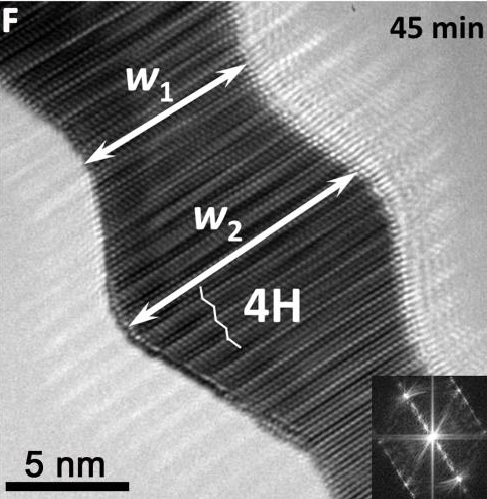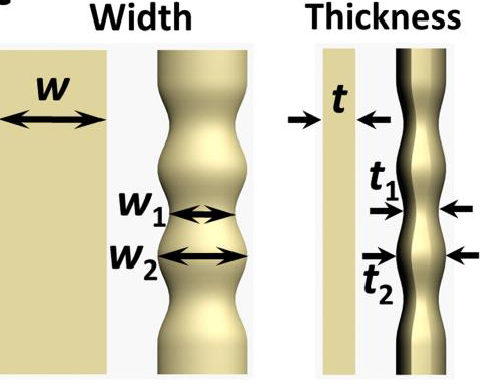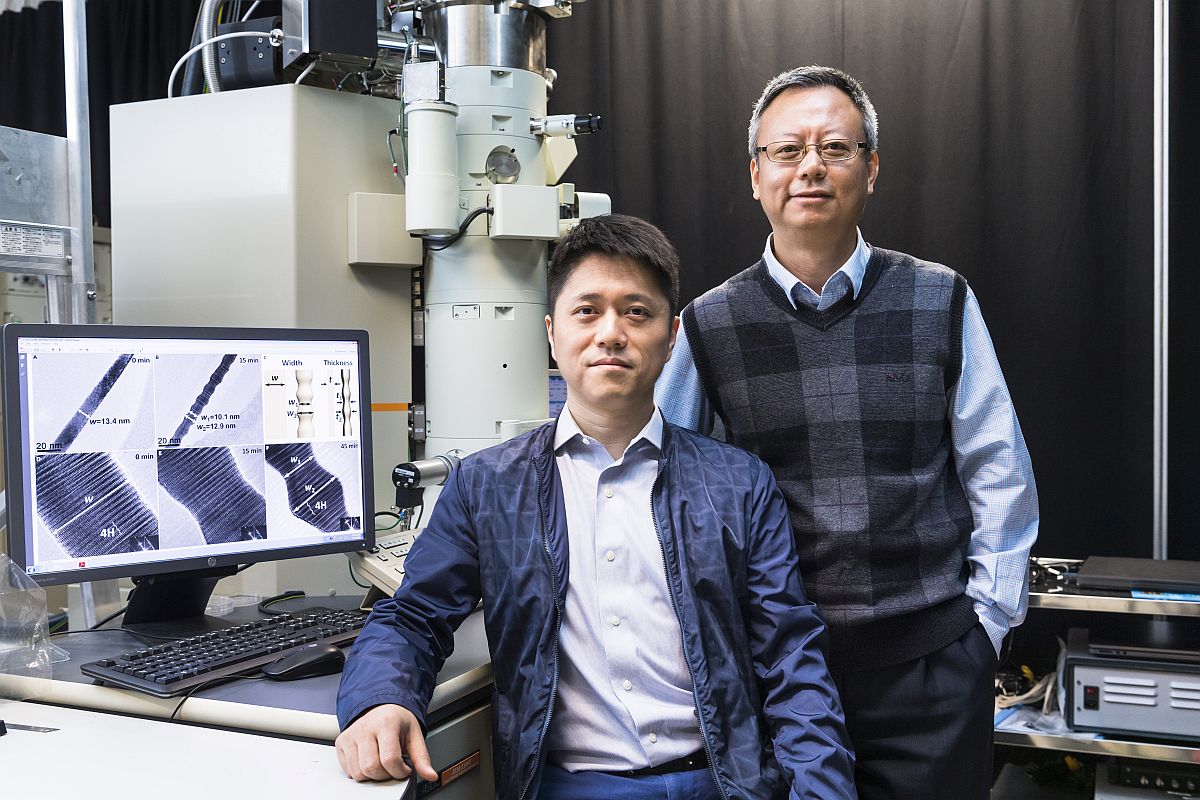Liquid-like behaviour displayed but phase remains stable in ultrathin hexagonal gold nanoribbons
A recent research led by City University of Hong Kong (CityU) has discovered that the ultrathin gold nanoribbons with unique hexagonal (4H type) crystal phase shows “liquid-like” behaviour under heating, but its hexagonal crystalline structure remains stable. This provides insight into the thermal stability of this new type of metallic nanomaterials and facilitates the development of practical applications in the future.
Because of its feature size of smaller than 10nm, ultrathin metal nanostructures have favourable properties different from bulk metals and regular metallic nanostructures. They have been regarded as a promising carrier for future nanoelectronics and catalysis. In particular, ultrathin gold nanoribbons with unusual metastable hexagonal (4H type) phase, firstly reported in an earlier study by Professor Zhang Hua, currently Herman Hu Chair Professor of Nanomaterials of Department of Chemistry at CityU in 2015, have much higher potential in plasmonic and catalytic applications like electrocatalytic hydrogen evolution reaction than the usual gold nanostructure with face-centered cubic (FCC type) phase. Yet these applications involve reactions and functioning at high temperature, and the phase stability of this type of gold nanoribbons under heating has not been well studied.
Recently, a research team led by Dr Lu Yang, Associate Professor of Department of Mechanical Engineering at CityU and Professor Zhang, collaborated with researchers of McGill University successfully unveiled the thermal responses of ultrathin 4H gold nanoribbons at elevated temperature by using advanced in situ transmission electron microscopy (TEM) techniques.
Shape changes but crystalline phase remains under moderate heating
According to the team’s findings, after tens of minutes of moderate heating at around 400K (around 127°C) by controlled electron beam irradiation, the 4H gold nanoribbons showed an obvious change in its geometric shape – from a smooth shape into a sinusoidal one.
This change in shape is called “Plateau-Rayleigh instability”, originally meaning that a falling stream of liquid tends to minimize their surface areas and hence break into a steady stream of droplets due to surface tension. The sinusoidal shape is an intermediate stage of a stream breaking into droplets.
“The Rayleigh instability phenomenon was originally found in fluid but has been discovered in some metallic nanostructures heated under high temperature recently. Yet for 4H gold nanoribbons in this study, the Rayleigh instability phenomenon was observed under low heating temperature,” said Dr Lu. He further elaborated that “Increasing in both atomic diffusion and surface energy optimization in nanoscale metal structure are the dominating mechanisms for their geometry evolution of Rayleigh instability. In this case, for ultrathin nano metal with a size smaller than 10nm, surface atom occupies a relatively higher proportion of its overall volume. So the diffusion of surface atoms has a much more significant impact on its overall shape, than that in metal structure in larger (or bulk) size. Hence the change of shape is much more significant when heated.”

The team also found the ribbon shape of gold nanoribbons possesses a general tendency to become a cylindrical shape upon heating, a distinct feature for nanoribbon samples, in order to reduce the surface area while the constant total volume maintains.

But what surprised the team was, despite its liquid-like deformation behavior of Rayleigh instability, the 4H metastable phase of gold nanoribbons was stable, remaining in solid crystalline structure without any phase transition throughout the moderate heating. “It is in an intriguing state of being both solid and liquid, where internal atoms remain in periodic crystalline ordered structure but its surface atoms can flow rapidly on a large scale and alter its geometry like liquid,” Dr Lu described.
It is the first time that Plateau-Rayleigh instability is observed in ultrathin gold nanoribbons and Dr Lu believed that it may be a universal phenomenon in other ultrathin metallic nanostructure, too.
Irreversible phase change at high temperature
The research team further studied the phase stability at higher temperature of the 4H gold nanoribbons. They observed that the gold nanoribbons started to change its phase from 4H to face-centered cubic (FCC) phase gradually when the temperature was at 800K (around 527°C). Further increase in temperature accelerated the phase transition. The whole nanoribbons transformed nearly completely to the FCC phase when the temperature increased to around 900K (around 627°C). And the phase transition was irreversible as the temperature dropped.
“This discovery provides a better understanding of the property and thermal stability in ultrathin gold nanostructures with the unique 4H phase. This would facilitate the development of future practical applications in nanoelectronics, plasmonics, and catalysis which involve operation in high temperature,” said Professor Zhang.
The team will extend their study on the properties of the ultrathin nanostructure of other precious metals, such as platinum, for exploring more application potentials.
The research findings were published in the scientific journal Matter from Cell Press, titled “Thermal effect and Rayleigh instability of ultrathin 4H hexagonal gold nanoribbons”. Dr Lu together with Professor Zhang Hua, as well as Professor Song Jun of McGill University, were the corresponding authors of the paper. The first authors were Li Peifeng and Han Ying, both from CityU and Zhou Xiao from McGill University. Research team members from CityU also included Dr Fan Zhanxi, Xu Shang, Cao Ke, Meng Fanling, and Gao Libo.

The research was supported by the Start-Up Grant from CityU, Research Grants Council of Hong Kong, National Natural Science Foundation of China, Natural Science Foundation of Guangdong Province, China and Innovation and Technology Commission via Hong Kong Branch of National Precious Metals Material Engineering Research Center.
DOI number: 10.1016/j.matt.2019.10.003
